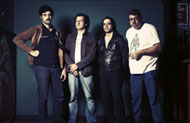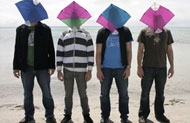Ampslam blog
Search
Filter by topic
The device that helped ignite a revolution
Well, it wasn't the first rebel in the digital music revolution, but it certainly was the second. This is a picture of my Diamond Multimedia Rio PMP300 portable consumer MP3 digital audio player introduced on September 15, 1998. I bought it off ebay; I suggest you do the same - if you can find one. The Rio was the first commercially successful personal MP3 player in North America. South Korea's MP3Man built by Saehan was the first personal MP3 device on the market, but it failed to ignite the firestorm that the Rio set alight. Why? Because the Recording Industry Association of America (RIAA) understood that it would be much more difficult to sue a foreign corporation than a domestic concern. Diamond's Rio represented to the RIAA the arrival of the anti-Christ, the long brewing fear that ever expanding digital technology would indeed tear from the clutches of the major record labels the ability of music consumers to finally download digital quality song files from their computers and onto a small portable device similar to the earlier cassette-based Walkman. Consumers were already ripping CD's, but with the concurrent arrival of the compressed MP3 technology which used only one-tenth of the computer memory normally required for a non-compressed digital file, the stage was set for a judicial showdown.

The Rio was powered by a single AA battery, came with 32 MB of internal memory, and allowed for 30 minutes of music at a bitrate of 128 kbits. It retailed for $200.00. The RIAA, filed an application for a Temporary Restraining Order to prevent the sale of the Rio player in the Central District Court of California, claiming the player violated the 1992 Audio Home Recording Act. See RIAA v. Diamond Multimedia. A TRO was initially granted then later denied. On appeal, the Ninth Circuit held that the Rio's "space-shifting" was fair use and not a copyright infringement.
After the lawsuit, over 200,000 RIOs were sold.
Long Live Rock.









